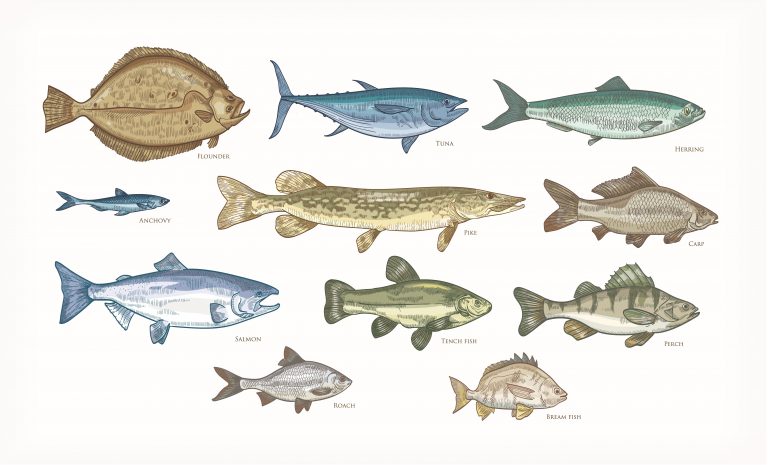Written by: Dr. Jacquie Jacob, University of Kentucky
Fishmeal is made from fish that are ground, cooked, and processed. There are two basic categories of fishmeal: fishmeal produced from fish caught for human consumption, such as salmon and tuna, and fishmeal produced from fish caught specifically for meal, such as herring, menhaden, and pollack. In the United States, menhaden is the fish most commonly used for fishmeal. Meals made from herring, anchovy, ocean perch (sometimes referred to as redfish), and whitefish are also available. Herring and anchovies are oil-type fish that are processed much like menhaden. Ocean perch is not an oily fish. Fishmeal made from ocean perch, which is caught primarily for human consumption, is the filleting waste from the processing of the fish. The term whitefish refers to cod, haddock, hake, flounder, and pollack. These fish are also caught for human consumption, and the by-products are converted to fishmeal for use in animal feeds.

Fishmeal is an excellent source of protein for poultry. It has high levels of essential amino acids such as methionine and lysine, and it also has a good balance of unsaturated fatty acids, certain minerals (available phosphorus), and vitamins (A, D, and B-complex). The use of fishmeal is usually restricted to 5% to 10% of the content of poultry diets.
Unfortunately, fishmeal is unstable and can spontaneously combust if not stored properly. The proteins in improperly stored fishmeal can also begin to break down, resulting in increasing levels of biogenic amines such as histamine. Consumption of high levels of histamine can cause gizzard erosion in chickens. In addition, fishmeal can be a source of foodborne pathogens, in particular, Salmonella spp.
Fishmeal used for animal feed must be stabilized with an antioxidant to preserve its quality. Ethoxyquin is typically added to commercial fishmeal to prevent oxidation, but ethoxyquin cannot be used in organic poultry feed. Naturox is an example of a “natural” antioxidant that can be used as an alternative to ethoxyquin. It contains a blend of tocopherols (vitamin E) and rosemary extract that counters the free radicals that start the oxidation process and cause fishmeal to become rancid. Lecithin is a chelator that also helps prevent the formation of free radicals.
Nutrient content of various fishmeals available in the United States (Source: Feedstuffs Ingredient Analysis Table: 2016 edition of the Feedstuffs Reference Issue, by Amy Batal and Nick Dale, University of Georgia)
| INGREDIENTS | DM | ME | CP | EE | CF | Ca | Meth | Lys |
|---|---|---|---|---|---|---|---|---|
| Fishmeal, AAFCO | 88 | 2600 | 59.0 | 5.6 | 1.0 | 5.50 | 1.72 | 5.17 |
| Herring, Atlantic | 93 | 3190 | 72.0 | 10.0 | 1.0 | 2.00 | 2.20 | 5.70 |
| Menhaden | 92 | 2950 | 62.0 | 9.2 | 1.0 | 4.80 | 1.70 | 4.70 |
| Anchovy, Peruvian | 91 | 2820 | 65.0 | 10.0 | 1.0 | 4.00 | 1.90 | 4.90 |
| Redfish | 92 | 2970 | 57.0 | 8.0 | 1.0 | 7.70 | 1.80 | 6.60 |
| Sardine | 92 | 2860 | 65.0 | 5.5 | 1.0 | 4.50 | 2.00 | 5.90 |
| Tuna | 93 | 2530 | 53.0 | 11.0 | 5.0 | 8.40 | 1.50 | 3.90 |
| Whitefish | 91 | 2600 | 61.0 | 4.0 | 1.0 | 7.00 | 1.65 | 4.30 |
| Freshwater Alewife | 90 | 3430 | 65.7 | 12.8 | 1.0 | 5.20 | 1.93 | 5.49 |
DM = Dry matter, %; Energy = kcal/kg; CP = crude protein, %; EE = Crude fat (ether extract), %; CF = Crude fiber, %; Ca = Calcium, %; Met = Methionine, %; Lys = Lysine, %
AAFOC = Association of American Feed Control Officials

